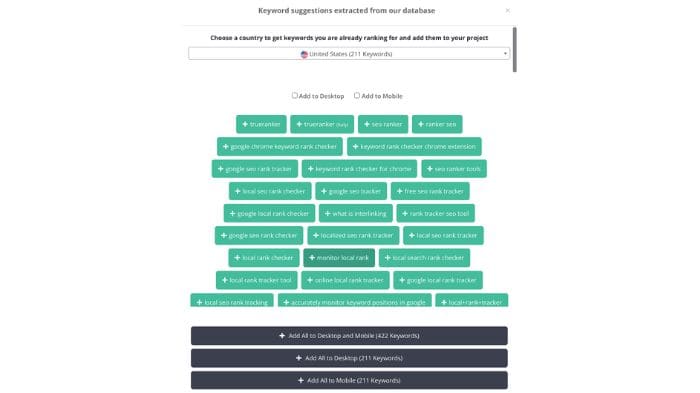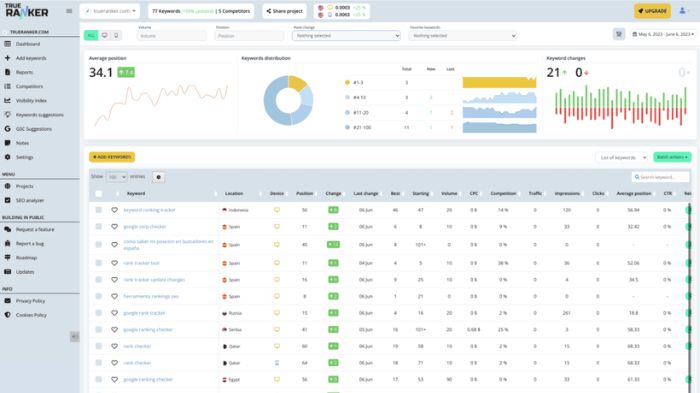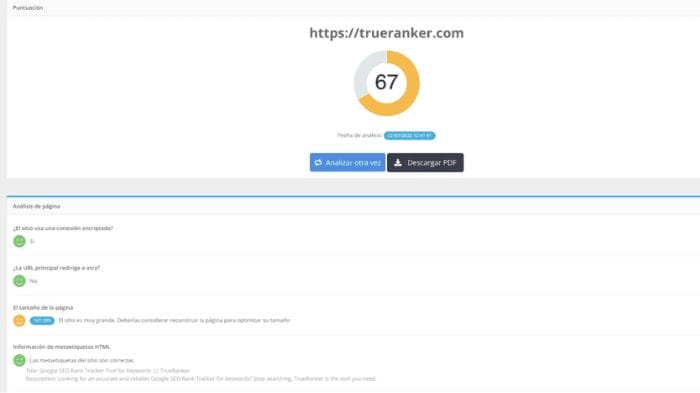This is a guest post, more info about the author below
Strong visibility on search engines is essential for businesses seeking success. While Search Engine Optimization (SEO) is key to improving visibility, many small businesses and entrepreneurs are constrained by budget limitations.
But as the old saying goes, there is a way if there is a will. Using a focused and resourceful approach, building a winning SEO strategy on a limited budget without a hefty financial commitment is possible. The following discussion has the essentials covered for you.
To begin with, we’ll help you make the best investment of your budget allocation. We’ll also delve deeper into ten SEO approaches you can operate with your small team. Without further talk, let’s get started!
Contents
ToggleWhat Should You Do on a Limited Budget?
According to a survey, 60% of marketers consider inbound strategies (such as SEO and blog content) as their most valuable lead-generation source in terms of quality. Additionally, SEO generates over ten times more traffic than organic social media.
If you aim to generate results immediately, spending your budget on a robust SEO tool is recommended. Even though SEO software can take up most of your allocation, it provides valuable insights and streamlines your optimization efforts, making it worth investing in.
Moreover, not all SEO tools are expensive. TrueRanker is a cost-efficient SEO tool you can try. It has its own tracking system, which lowers the overall cost of keyword monitoring. Yet, this tool maintains the same level of accuracy in keyword ranking as other tools.
One of the standout features of TrueRanker is its real-time ranking monitoring for your websites on the Google search engine. Its unique feature enables you to analyze keywords by country, province, or city, ensuring that your content targets specific local audiences effectively.
SEO tools like TrueRanker empower you to focus on data-driven decisions and unlock the full potential of your SEO strategy. We’ve curated the ten ways to elevate your SEO games on a shoestring budget using an SEO tool.
#1. Thorough Keyword Research

Keyword research is vital as it helps you understand the language and intent of your target audience. It lets you identify popular queries, topics, and word choices many users search for.
Using relevant keywords to your audience and content topic can increase the chance of your content sitting at the top rank of search results. Securing the first page results will drive organic traffic and relevant audiences to your site.
To find potential keywords, brainstorm a list of terms related to your business or industry. Use keyword research tools Google Keyword Planner or paid platforms to identify search volumes and competition levels for those keywords.
Balancing between high search volume and low competition is recommended, as this indicates opportunities to rank well in search results. Moreover, consider aspects such as relevance, search volume, competition, long-tailed keywords, and user intent when conducting keyword research.
#2. Comprehensive Competitor Analysis

Conducting a competitor analysis can help you build more strategic and accurate SEO efforts. It allows you to identify competitive advantages, learn from successful strategies, discover new opportunities, and stay updated on industry trends.
Typically, each SEO tool has competitor analysis features. What you can do with these features is find similar brands and analyze their keywords. You can identify what keywords they target and rank for, including discovering their link-building strategies.
Other than that, you can study their content deeper. Look at the type of content they produce and its format, whether social media videos, long blog posts, or other formats. You can analyze which content types resonate best for their audiences.
We suggest you pay attention to keyword overlaps when studying your competitors. For example, discover your competitors’ keywords and identify potential gaps to avoid overlapping.
#3. Accurate On-Page SEO Optimization

On-page SEO optimization means fine-tuning several elements within your website to optimize and enhance its search engine visibility and improve user experience. One of the crucial elements of on-page optimization is keyword placement and relevance. Using an SEO tool will specifically help tackle this issue.
You can get valuable insights on incorporating targeted keywords naturally within your content, meta titles, meta descriptions, and headings. However, you may still need human checks to make sure your text flows naturally and is easy to digest by readers.
In addition, on-page SEO optimization includes managing header tags (H1, H2, H3, etc.). Headings help you organize content hierarchically, making it more scannable and user-friendly. On top of that, improving your website’s mobile friendliness and loading speed further enhances user experience and contributes to better search engine rankings.
#4. Invest in Valuable and Authentic Content
Investing in valuable and authentic content is a strategic move that significantly impacts your website’s SEO and online presence. Provides useful information to your audiences to value your brand as a trusted authority in your industry.
Moreover, unique content sets you apart from competitors and enhances your credibility with both users and search engines. Consistent and frequent publishing of high-quality content builds trust and keeps your audience engaged, while visual elements enhance the presentation and encourage social sharing.
Share your written content on social media to encourage people to read. In addition, interaction with your audience fosters a sense of community and loyalty, leading to long-term relationships with your customers.
#5. Get Quality Backlinks
Quality backlinks are essential for improving your website’s search engine rankings and overall authority. Backlinks from reputable and authoritative websites signal that your content is trustworthy and reliable to search engines.
These high-quality backlinks boost your SEO and drive referral traffic to your site, potentially expanding your customer base. A diverse backlink profile, including links from various sources, indicates a natural link-building process, which search engines favor over spammy or low-quality links.
Backlinks from popular and highly shared content can also generate social signals, further enhancing your SEO performance. Engaging in ethical outreach and networking efforts can lead to valuable backlink opportunities and foster beneficial relationships within your industry.
To maintain a positive SEO strategy, avoid black hat practices, as search engines penalize websites that engage in unethical link-building methods. Focus on obtaining quality backlinks from relevant and authoritative sources to enhance your website’s authority, trustworthiness, and search engine visibility.
#6. Leverage Social Media and Online Groups
Leveraging social media is a quick way to expose your content and drive traffic to your site. Especially if you use paid promotion features, you can include your page link and drive more significant traffic there.
It’s a fact that social media platforms have billions of active users. These interactions help humanize your brand, build stronger relationships, and foster brand loyalty. You can use an AI social media post generator to schedule posts across all your social platforms at a frequency you like, so that there’s sufficient content going out on all pages for your audience to interact with.
Moreover, platforms like LinkedIn and Facebook offer online groups and communities. You can find relevant groups on those platforms and share your content with others. This strategy helps you reach relevant audiences and attract potential customers to your website.
#7. Include Visual Content
Visual content plays a vital role in captivating and retaining your audience’s attention. Incorporating visual elements into your content enhances its appeal by breaking down a wall of context into digestible chunks.

Visual elements range from images, illustrations, infographics, and videos. These visuals should be relevant and support your content. They can impact your website’s SEO by reducing bounce rates, increasing dwell time, and encouraging social sharing, which determines the quality and relevance of your content.
Moreover, your readers may share your visuals on their websites or social media. Shared content leads to increased exposure and potential backlinks. Videos and infographics, in particular, are famous for social sharing due to their visual appeal and ease of understanding.
#8. Enhance User Experience
Enhancing user experience (UX) means providing a well-designed website with easy navigation, valuable content, and mobile responsiveness. These factors result in lower bounce rates and increased dwell time.
Visitors tend to visit and stay longer on your site, browsing and engaging with your content. This user behavior signals to search engines that your website is relevant and user-friendly. A mobile-friendly design is essential to increase users’ engagement with the web on mobile devices.
Additionally, including clear calls-to-action and optimizing page load speed ensures a seamless experience for visitors, further improving your SEO performance. Regularly testing and optimizing your website based on user feedback and behavior ensures continuous improvement in user experience.
#9. Monitor and Analysis

Monitoring and analyzing data are fundamental aspects of effective SEO. You must track key performance metrics, such as organic traffic, keyword rankings, conversion rates, and bounce rates, to evaluate and define the success of your SEO efforts.
Here, data analysis helps identify opportunities for growth and content improvement. You can understand user behavior and preferences to better tailor your website to serve your audience. Many SEO tools have robust analytic features to aid this process.
Additionally, consider tracking algorithm changes to understand their impact on your website’s rankings so that you can make necessary adjustments. Cost-free SEO tools like Google Analytics and Google Search Console facilitate data collection and analysis, providing valuable insights for informed decision-making. There are also many low-cost alternatives like TrueRanker or you may find many other SaaS tools online.
#10. Patience and Consistency is Key
Patience and consistency are crucial virtues when you build an SEO strategy. Since it’s a long-term journey, you may not get results immediately. In fact, Google and other search engines may take time to index and rank your content.
Encourage your team to be patient and allow your efforts to yield gradual results. Patience and consistency enable your website to adapt to these changes and maintain a positive SEO impact. Moreover, consistently deliver valuable content and provide positive user experiences over time.
With all being said, patience and consistency lead to sustainable growth in organic traffic and search engine rankings. These crucial attitudes ensure your website’s long-term success in competitive search engine results.
Signs Your SEO Strategy is a Success
After all your efforts, the following question is, ‘How do you know your SEO strategy works?’. Well, a successful SEO strategy yields tangible results that positively impact your website’s performance, visibility, and online presence. Here are some key signs that indicate your SEO strategy is working effectively:
Organic Traffic: One of the most significant signs of a successful SEO strategy is a consistent increase in organic traffic to your website, which you can check on analytics. As your content becomes more relevant and ranks higher in search engine results, more users find and visit your website through organic search.
Search Engine Rankings: A successful SEO strategy leads to improved rankings for targeted keywords and phrases. When your website appears on the first page or within the top positions of search engine results, it shows that your efforts to optimize content and build authority are paying off.
Positive Keyword Performance: Regular monitoring of keyword performance shows a positive trend in rankings and visibility for targeted keywords. When more of your chosen keywords rank higher, it indicates that your content aligns with user intent and search engine algorithms.
User Engagement Metrics: A successful SEO strategy improves user engagement measurements, such as time on page, pages per session, and click-through rates. Higher engagement metrics suggest that your content meets user expectations and provides valuable information.
Lower Bounce Rates: A well-optimized website with valuable content and a positive user experience typically has lower bounce rates. When users visit multiple pages and spend more time on your site, it gives signals to search engine algorithms that your content is informative and relevant.
Conversion Rates and ROI: Users who find your website through relevant search queries will engage with your content. They may also make purchases, sign up for newsletters, or complete other desired actions. Moreover, they can turn into qualified leads and customers, yielding a higher return on your investment.
Feedback and Reviews: Check your comment sections to find audiences’ responses. Satisfied users often leave positive feedback and review about your website or business. Positive testimonials and reviews can further boost your credibility and attract more visitors.
Takeaways
Building a winning SEO strategy on a limited budget is possible with the right approach and focus on key elements. Even though we recommend you spend a budget on a robust SEO tool, you can also use free options like Google Analytics and Google Keyword Planner.
Conduct thorough keyword research, competitor analysis, and accurate on-page optimization to lay the groundwork for a strong SEO foundation. Also, invest in valuable and authentic content to elevate your website’s visibility and authority.
Lastly, constantly refine your strategy based on data-driven insights to significantly improve your website’s search engine rankings and organic traffic. Remember that success in SEO takes time, and consistent effort will yield fruitful results in the competitive digital landscape.
Author Bio
 Andre Oentoro is the founder of Breadnbeyond, an award-winning explainer video company. He helps businesses increase conversion rates, close more sales, and get positive ROI from explainer videos (in that order).
Andre Oentoro is the founder of Breadnbeyond, an award-winning explainer video company. He helps businesses increase conversion rates, close more sales, and get positive ROI from explainer videos (in that order).
- LinkedIn: Andre Oentoro
- Instagram: andre_oentoro
- Twitter: andreoen
